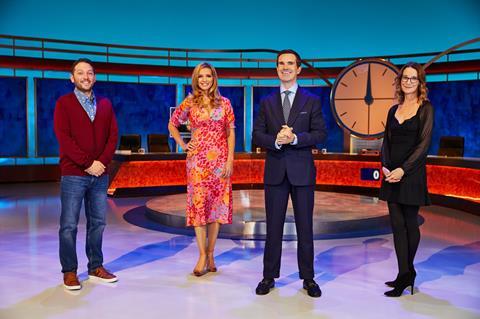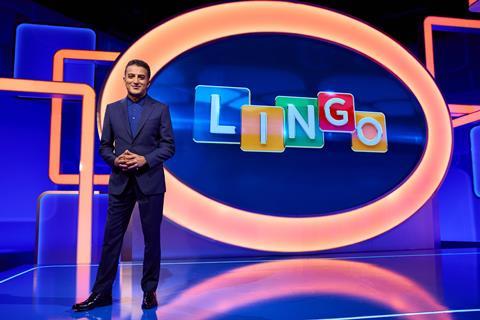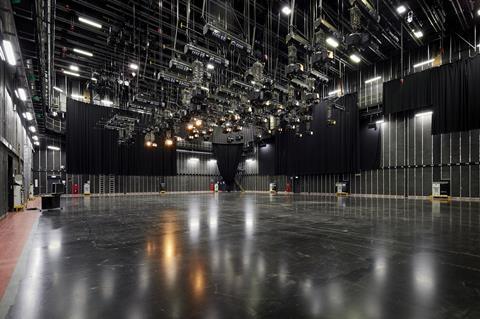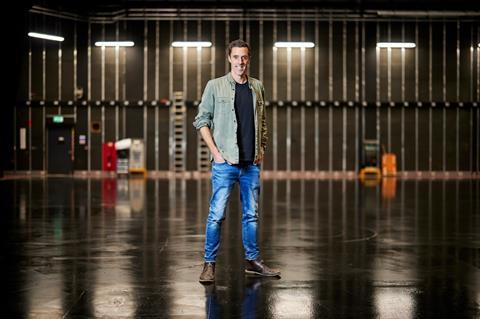Paul McGavin, studio turnaround manager at dock10, explains why shiny floor shows are called just that

Next time you watch an entertainment show on TV, have a look at the floor.
Very few viewers will even notice the floor. And who can blame them? They should have far more interesting things to look at on screen.
Yet the floor is the place that TV professionals start when creating a studio entertainment show.
‘Shiny floor show’ is one of the most common expressions in TV, used to describe an entertainment show that is recorded or broadcast from the floor of a television studio.
The expression hints at how fundamentally important the floor is to an entertainment programme.
Talent shows like The Voice through to quizzes such as Wheel Of Fortune and The 1% Club are all classic examples of shiny floor shows. Each is filmed in a television studio with a flat and smooth resin floor, usually (but not always) painted with a glossy black finish.

The smooth resin surface of the TV studio allows cameras mounted on pedestals to glide seamlessly across the floor during filming. Meanwhile, the glossy black paint picks up reflections from the lights above without attracting too much attention away from the set itself.
A shiny floor show is built from the ground up - and every single show needs a fresh, clean coat of paint.
One of the first questions we ask a new production is what colour floor they want. The majority request shiny black floors, but others like to differentiate themselves with colours such as blue (ITV’s Lingo), grey (C4’s Countdown), white (CBeebies’ Days of the Week Songs) or even orange (CBeebies’ Justin’s House). Some have more complex needs: for example, a studio sitcom might want wood effect floorboards or flagstones painted on the floor by scenic artists.
The choice of floor colour not only determines the look of the show, but also how it fits into the production schedule of a busy TV studio.
For example, dock10 has multiple shows filming in each of its eight studios every week. Blue Peter (with a black floor) might be filming in one studio for part of the week, to be replaced by Countdown (with a grey floor) later in the week. One of the biggest considerations when turning around these shows is how to get the studio floor ready in time.
Painting (and cleaning) the floor
The studio floors are painted with a specialist water-based, washable paint from UK manufacturer Mylands, which has long supplied the film, television and theatre industry. It is a very liquid kind of paint that is good for applying to floors but would drip like milk if painted on a wall. It can also be easily mixed to create any colour required.
Some 70-80 litres of the paint will be used for a base coat for dock10’s biggest studio – the 12,500 square feet HQ1.

Typically, it will take two painters about a day to paint HQ1. Each will paint standing up, working with a roller on the end of a long pole, starting in one corner and methodically working their way across the studio.
The paint dries pretty quickly but electric fans are used to speed up the process if there is a particularly tight deadline to meet.
The base coat will typically be applied before a set is loaded into to a studio. Once the set and lighting are in place and the floor has been walked all over, then second coat goes on so there is a mirror finish for filming. If the shoot lasts more than a few days, another coat might also be applied midway through filming.
The painting process is repeated all over again when the next show moves into the studio.
Complicating matters, TV studios also have to schedule in time to wash paint off the floor. After all, there are only so many coats of paint that can be applied before the surface starts to get a bit bumpy.
This is done with a ride-on scrubbing machine that looks a bit like something you might see cleaning a supermarket or airport floor. It has the equivalent of two rotating 20-inch Brillo pads underneath which scrub off the washable paint with the help of cleaning agent borax decahydrate and water.
Once scrubbed clean, the whole process of painting the floor can start over again…ready for the next show to move into the studio.

Paul McGavin is studio turnaround manager at dock10.







No comments yet